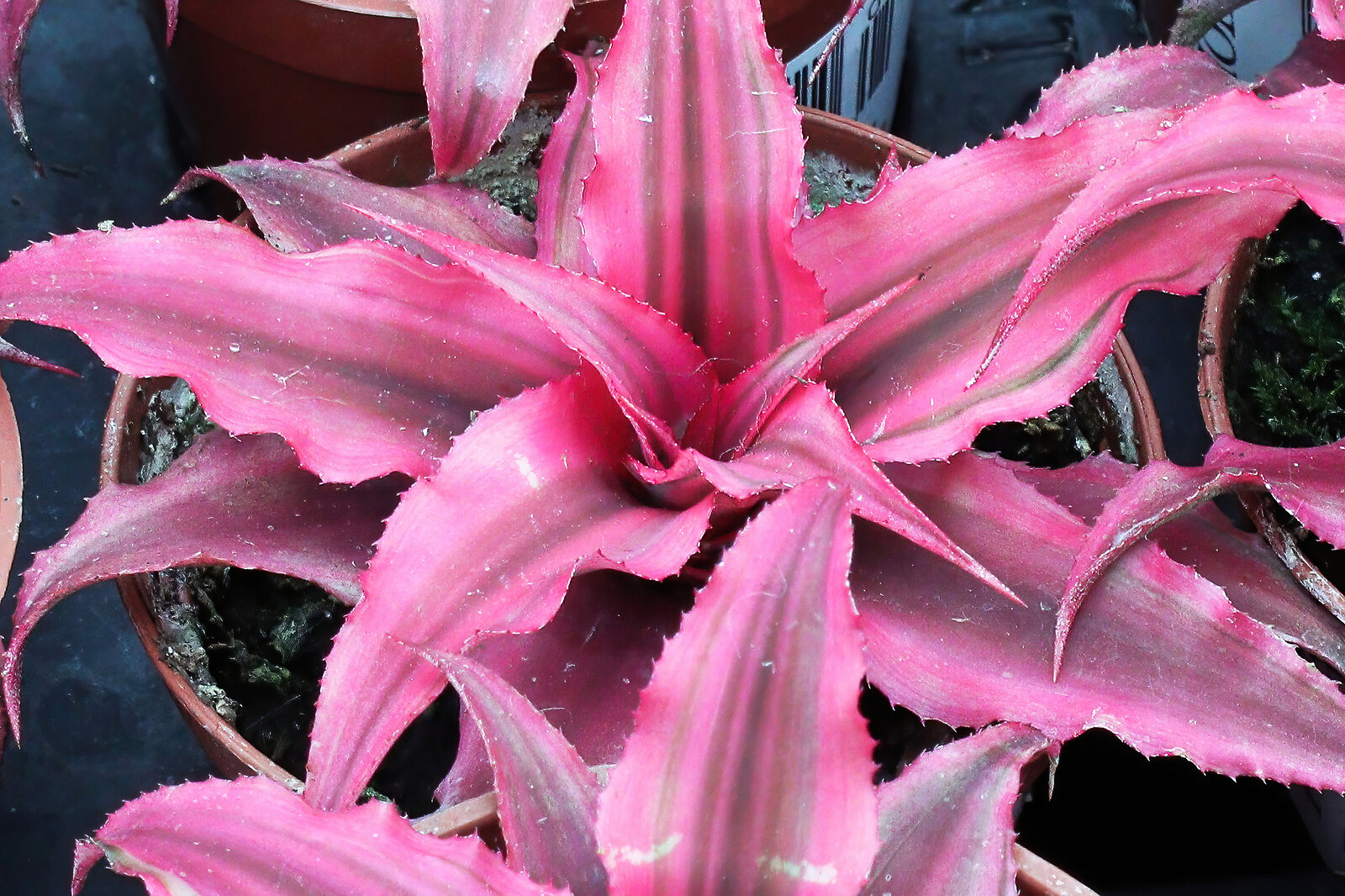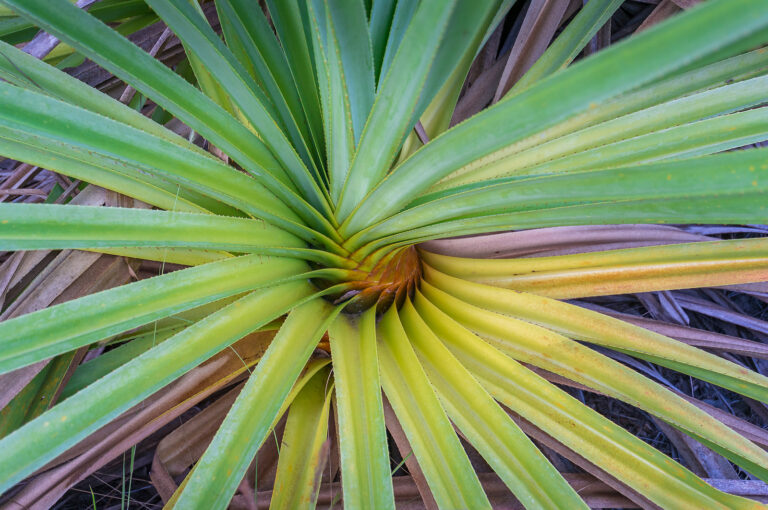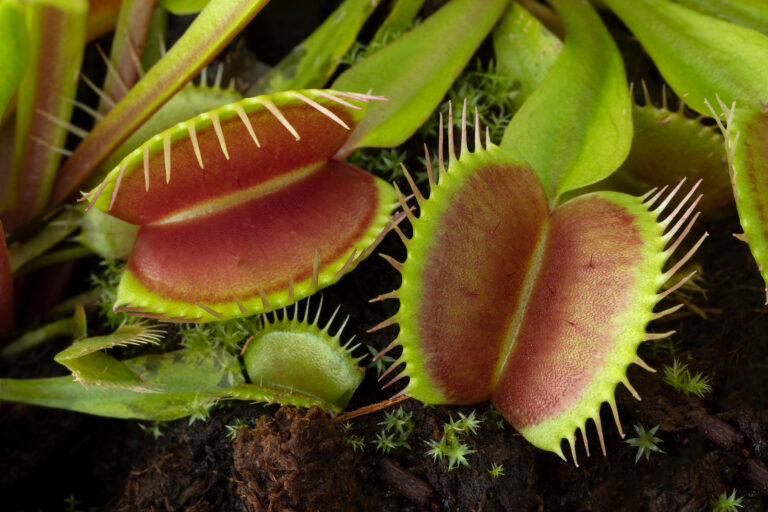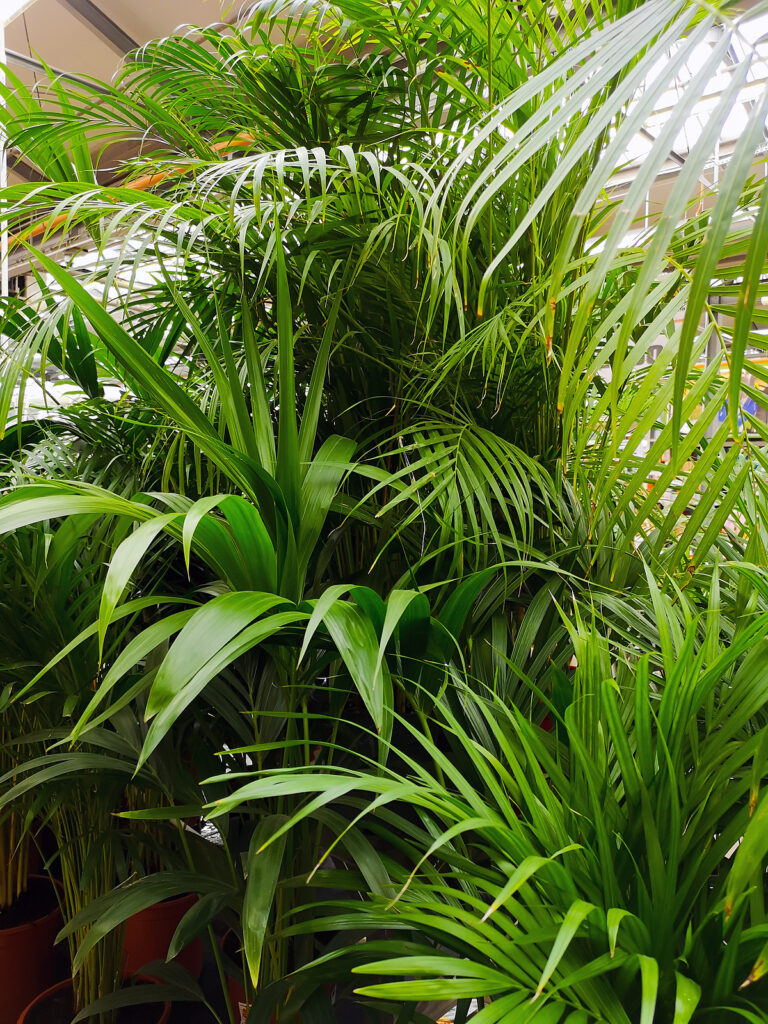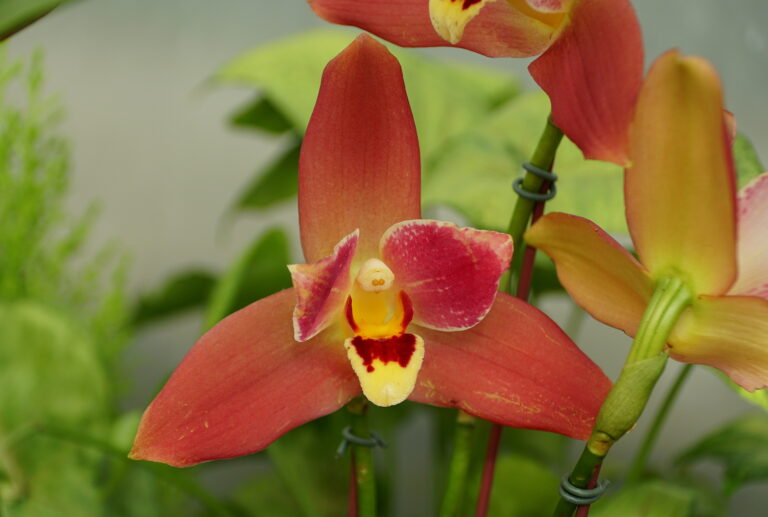How to Grow Earth Star — Cryptanthus
Cryptanthus, commonly known as Earth Stars, is a genus of small, terrestrial bromeliads known for their rosette of star-shaped, low-growing foliage. Native to Brazil, these plants are admired for their striking patterns, colors, and textures. Unlike many bromeliads that are epiphytic (growing on other plants), Cryptanthus species grow directly in the soil, making them a bit unique among bromeliads. They are often used as ornamental plants in indoor settings, but in warmer climates, they can also be used in gardens.
Cryptanthus are terrestrial bromeliads with rippled, variegated leaves in a flat rosette. They are so low-growing and flat that they are nicknamed earth stars. Cryptanthus are grown for their colorful and unusual leaves, not flowers. Cryptanthus is commonly called Earth Star.
Cryptanthus leaves are often prickly, in shades of green, pink, copper, and bronze. Cryptanthus are stemless; some leaves emerge from stolons, a type of underground root.
Cryptanthus bear inconspicuous waxy white flowers. When flowers appear on mature plants, offsets commonly follow. Offsets can be removed and planted to start new plants.
Cryptanthus is a genus of about 50 species native to forests in eastern Brazil. There are numerous hybrids.
Cryptanthus, or Earth Stars, are prized for their star-shaped, colorful foliage. Whether used outdoors in tropical or subtropical gardens as a ground cover or indoors as a vibrant houseplant or terrarium specimen, Cryptanthus brings unique beauty to any space. Easy to care for and tolerant of lower light levels, these plants are perfect for both beginner and experienced plant enthusiasts. Their compact, low-growing habit makes them ideal for small spaces, while their bold colors add a splash of life to any indoor or outdoor setting.
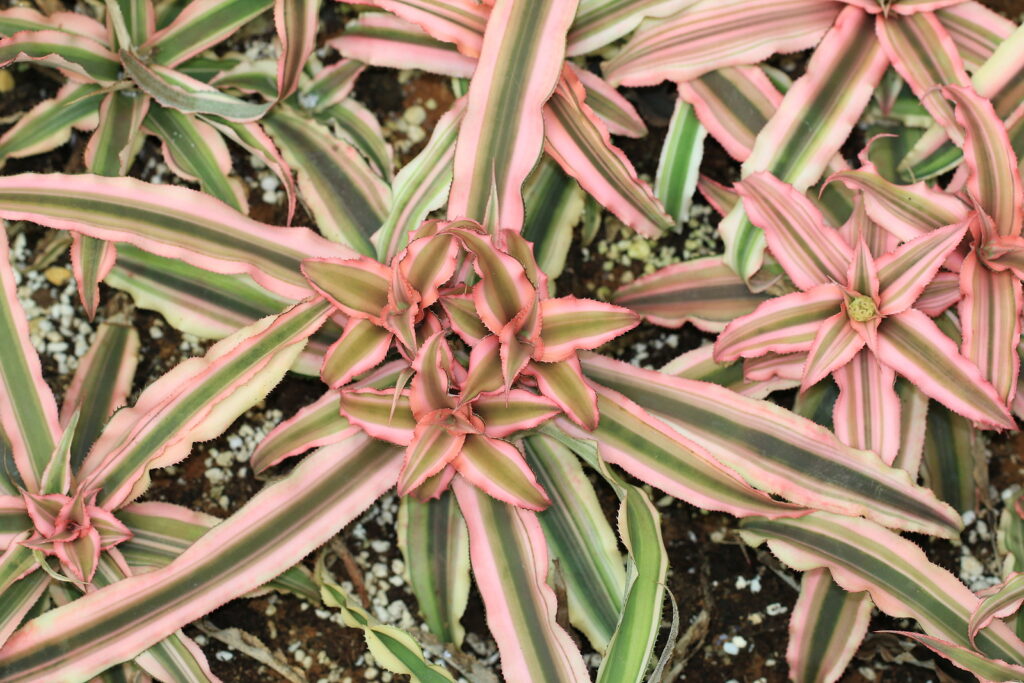
Cryptanthus description
- Foliage: Cryptanthus plants have wavy, textured leaves arranged in a star-like rosette pattern, giving them their common name, Earth Stars. The leaves are often striped, mottled, or banded, with colors ranging from green and silver to pink, red, bronze, and even purple, depending on the variety and growing conditions. Their colorful foliage is their main ornamental feature.
- Flowers: The flowers of Cryptanthus are small and generally inconspicuous, growing from the center of the rosette. They are usually white or pale-colored, and while they are not the primary attraction, the foliage more than compensates for this.
- Growth Habit: Cryptanthus plants are compact and low-growing, generally staying under 6 inches tall, but spreading to form wide rosettes. Their slow-growing, creeping habit makes them ideal for small spaces or terrariums.
Cryptanthus uses in the garden
- Tropical or Subtropical Gardens: In USDA Zones 10-11, Cryptanthus can be planted outdoors in garden beds or used as ground cover in shaded or partially shaded areas. Their compact, spreading growth habit makes them ideal for filling gaps in rock gardens or under larger plants. Their unique foliage adds texture and color to garden spaces where other plants may struggle to thrive.
- Shaded Garden Areas: Cryptanthus prefers indirect light or partial shade, so they are well-suited for planting under trees, shrubs, or in other areas that receive dappled sunlight.
- Borders or Edging: Cryptanthus can be used as a colorful ground cover or border plant in shaded garden areas. Their low-growing form and wide variety of leaf colors make them an interesting addition to garden edges or pathways.
Cryptanthus uses as a houseplant
- Decorative Houseplant: Cryptanthus is highly popular as a houseplant due to its compact size and striking, star-shaped foliage. The vivid colors and intricate leaf patterns make it a standout in any indoor plant collection. Cryptanthus can be displayed on windowsills, tabletops, or shelves as a focal point or accent plant.
- Terrariums: Cryptanthus is ideal for use in terrariums because of its small size and need for humidity. Its star-like growth habit adds visual interest to closed or open terrarium designs. It pairs well with other small tropical plants or mosses in terrarium setups.
- Low-Light Tolerance: Unlike many bromeliads that need bright light, Cryptanthus can tolerate lower light conditions, making it suitable for indoor spaces that don’t receive much direct sunlight. It does well in rooms with indirect or filtered light.
- Easy-Care Plant: Cryptanthus is relatively low-maintenance, requiring minimal watering and care, which makes it a great choice for beginners or those with busy schedules.
Cryptanthus care tips
- Light: Cryptanthus prefers bright, indirect light, but it can also tolerate partial shade or lower light levels indoors. Too much direct sunlight can cause the leaves to burn or fade, while too little light can reduce the vibrancy of the foliage.
- Watering: Water Cryptanthus when the top inch of soil feels dry. While it enjoys moisture, the plant does not like to sit in soggy soil. It’s important to allow the soil to drain well and avoid overwatering. In more humid environments, it will thrive with minimal watering.
- Humidity: Cryptanthus prefers higher humidity levels, which mimic its natural tropical environment. Misting the plant occasionally or placing it in a bathroom or near a humidifier can help maintain the right humidity levels.
- Temperature: Cryptanthus thrives in warm temperatures, ideally between 60-80°F (16-27°C). It is not frost-tolerant, so if grown outdoors in cooler climates, it should be brought indoors during the winter months.
- Soil: Use a well-draining potting mix, ideally a mix designed for bromeliads or one with a combination of peat, perlite, and orchid bark. The plant does well in relatively shallow soil since it has shallow roots.
- Fertilization: Fertilize Cryptanthus lightly with a diluted, balanced liquid fertilizer during the growing season (spring and summer). Too much fertilizer can cause the plant’s colors to fade.
Cryptanthus styling ideas
- Terrarium Centerpiece: Cryptanthus is often the star of terrarium designs, providing a pop of color and texture. Combine it with mosses, ferns, and other small tropical plants to create a lush, miniature landscape.
- Indoor Plant Arrangements: Pair Cryptanthus with other small houseplants in decorative pots or bowls to create a colorful and dynamic indoor arrangement. The plant’s compact size and striking foliage make it a good contrast to softer-leaved plants.
- Shelf or Desk Display: Cryptanthus is perfect for small spaces like shelves, desks, or windowsills. Its low-maintenance needs and vibrant appearance make it an excellent plant for brightening up indoor spaces.
Outdoor/indoor adaptability
Cryptanthus is highly adaptable and can thrive both outdoors (in suitable climates) and indoors. It’s a versatile plant that can easily transition between outdoor garden beds in warm climates and indoor container growth. For those in colder regions, Cryptanthus can be moved inside during winter months to continue thriving as a houseplant.
Get to know Cryptanthus
- Plant type: Terrestrial bromeliads
- Growing zones and range: Zone 15
- Optimal growing temperature: day, 68° to 75°F (20° to 24°C); slightly cooler at night. It requires average room temperature and high humidity.
- Height and width: 4 to 8 inches (10-20cm) tall and 10 to 24 inches (25-60cm) wide
- Foliage: Flat, star-shaped waxy-margined leaves from flat, star-like rosettes
- Flowers: Waxy white flowers appear on mature plant and signal the appearance of offsets.
- Bloom time: Summer
- Uses: Houseplant, tropical garden
- Common name: Earth star
- Botanical name: Cryptanthus
- Family name: Bromeliaceae
- Origin: Eastern Brazil

Where to plant Cryptanthus
- Light: Indoors plant Cryptanthus in bright light, no direct sun, from eastern or western exposure for best color. Air circulation is important. Cryptanthus adapts to various light conditions, but bright light enhances its leaf color.
- Light: Outdoors plant Cryptanthus in partial or dappled shade
- Soil: Grow Cryptanthus in terrestrial bromeliad mix. Peat-bases soilless mix or in sphagnum moss. s
When to plant Cryptanthus
- Set Cryptanthus outdoors in a tropical or subtropical climate any time during the year.
Planting and spacing Cryptanthus
- Space Cryptanthus 10 to 24 inches (25-60cm) apart depending on the variety.
How to water and feed Cryptanthus
- Water: Water Cryptanthus moderately during the growing season. Mist leaves regularly with tepid water
- Feeding: Apply a dilute fertilizer monthly. Never fertilize a dry plant.
Cryptanthus care
- Cryptanthus growth may slow in winter. Set Cryptanthus in a cool place, 60°F (16°C), with full light. Reduce water in winter.
Growing Cryptanthus as a houseplant
- Cryptanthus can adapt to various light conditions, but bright light enhances the leaf color.
- Cryptanthus require average room temperature and high humidity.
- Allow the potting mix to dry substantially between thorough waterings.
- Fertilize the plant in spring and summer.
Cryptanthus pests and diseases
- Cryptanthus is vulnerable to damage by scale insect and mealybugs.
Cryptanthus propagation
- Propagate Cryptanthus from offsets or seeds. Offsets can be repotted in a peat-bases soilless mix or in sphagnum moss.
Cryptanthus varieties to grow
- Cryptanthus bivittatus. Wavy, greenish brown or cream-striped leaves with a pink tint; leaves grow to 4 inches long. C. bivittatus ‘Minor’ has green and cream to pink stripes; leaves are narrower and shorter.
- C. x ‘It’, color-band cryptanthus. Green leaves with cream and pink stripes.
- C. bromelioides. Grows to 18 inches (46 cm) tall, bears white, rose, and green leaves.
- C. ‘Pink Starlite’. Dainty, striped in cream, green, and pink.
- C. zonatus. Green leaves crossbanded with light brown, grows 10 to 12 inches (25 to 30 cm) tall.

